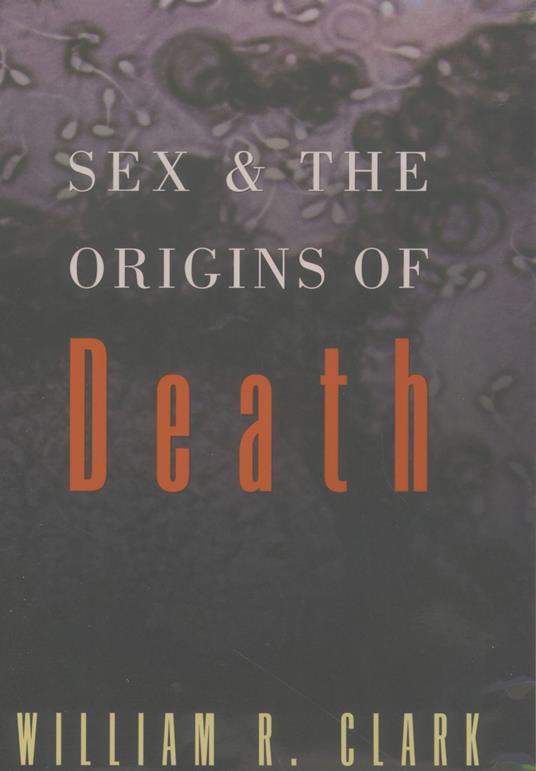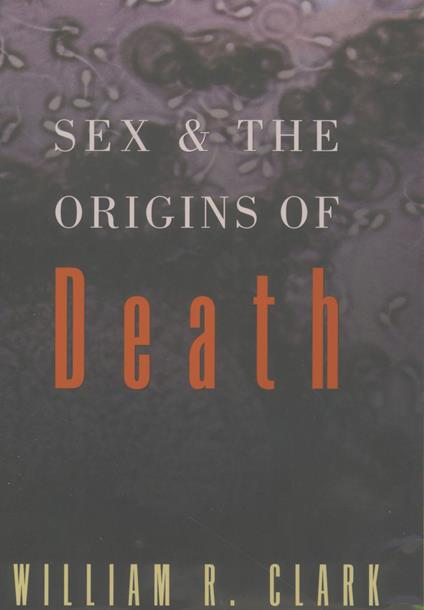L’articolo è stato aggiunto alla lista dei desideri
IBS.it, l'altro eCommerce
Sex and the Origins of Death
Cliccando su “Conferma” dichiari che il contenuto da te inserito è conforme alle Condizioni Generali d’Uso del Sito ed alle Linee Guida sui Contenuti Vietati. Puoi rileggere e modificare e successivamente confermare il tuo contenuto. Tra poche ore lo troverai online (in caso contrario verifica la conformità del contenuto alle policy del Sito).
Grazie per la tua recensione!
Tra poche ore la vedrai online (in caso contrario verifica la conformità del testo alle nostre linee guida). Dopo la pubblicazione per te +4 punti



Tutti i formati ed edizioni
Promo attive (0)
Death, for bacteria, is not inevitable. Protect a bacterium from predators, and provide it with adequate food and space to grow, and it would continue living--and reproducing asexually--forever. But a paramecium (a slightly more advanced single-cell organism), under the same ideal conditions, would stop dividing after about 200 generations--and die. Death, for paramecia and their offspring, is inevitable. Unless they have sex. If at any point during that 200 or so generations, two of the progeny of our paramecium have sex, their clock will be reset to zero. They and their progeny are granted another 200 generations. Those who fail to have sex eventually die. Immortality for bacteria is automatic; for all other living beings--including humans--immortality depends on having sex. But why is this so? Why must death be inevitable? And what is the connection between death and sexual reproduction? In Sex and the Origins of Death, William R. Clark looks at life and death at the level of the cell, as he addresses such profound questions as why we age, why death exists, and why death and sex go hand in hand. Clark reveals that there are in fact two kinds of cell death--accidental death, caused by extreme cold or heat, starvation, or physical destruction, and "programmed cell death," initiated by codes embedded in our DNA. (Bacteria have no such codes.) We learn that every cell in our body has a self-destruct program embedded into it and that cell suicide is in fact a fairly commonplace event. We also discover that virtually every aspect of a cell's life is regulated by its DNA, including its own death, that the span of life is genetically determined (identical twins on average die 36 months apart, randomly selected siblings 106 months apart), that human tissue in culture will divide some 50 times and then die (an important exception being tumor cells, which divide indefinitely). But why do our cells have such programs? Why must we die? To shed light on this question, Clark reaches far back in evolutionary history, to the moment when "inevitable death" (death from aging) first appeared. For cells during the first billion years, death, when it occurred, was accidental; there was nothing programmed into them that said they must die. But fierce competition gradually led to multicellular animals--size being an advantage against predators--and with this change came cell specialization and, most important, germ cells in which reproductive DNA was segregated. When sexual reproduction evolved, it became the dominant form of reproduction on the planet, in part because mixing DNA from two individuals corrects errors that have crept into the code. But this improved DNA made DNA in the other (somatic) cells not only superfluous, but dangerous, because somatic DNA might harbor mutations. Nature's solution to this danger, Clark concludes, was programmed death--the somatic cells must die. Unfortunately, we are the somatic cells. Death is necessary to exploit to the fullest the advantages of sexual reproduction. In Sex and the Origins of Death, William Clark ranges far and wide over fascinating terrain. Whether describing a 62-year-old man having a major heart attack (and how his myocardial cells rupture and die), or discussing curious life-forms that defy any definition of life (including bacterial spores, which can regenerate after decades of inactivity, and viruses, which are nothing more than DNA or RNA wrapped in protein), this brilliant, profound volume illuminates the miraculous workings of life at its most elemental level and finds in these tiny spaces the answers to some of our largest questions.
L'articolo è stato aggiunto al carrello
Formato:
Gli eBook venduti da IBS.it sono in formato ePub e possono essere protetti da Adobe DRM. In caso di download di un file protetto da DRM si otterrà un file in formato .acs, (Adobe Content Server Message), che dovrà essere aperto tramite Adobe Digital Editions e autorizzato tramite un account Adobe, prima di poter essere letto su pc o trasferito su dispositivi compatibili.
Cloud:
Gli eBook venduti da IBS.it sono sincronizzati automaticamente su tutti i client di lettura Kobo successivamente all’acquisto. Grazie al Cloud Kobo i progressi di lettura, le note, le evidenziazioni vengono salvati e sincronizzati automaticamente su tutti i dispositivi e le APP di lettura Kobo utilizzati per la lettura.
Clicca qui per sapere come scaricare gli ebook utilizzando un pc con sistema operativo Windows
L’articolo è stato aggiunto alla lista dei desideri


